Deva (Hungarian Déva, German Diemrich) is the municipality of residence of Hunedoara County, Transylvania, Romania, consisting of the component localities Deva (residence) and Sântuhalm, and the villages of Archia, Bârcea Mică and Cristur.
It is assumed that the name Deva is related to the ancient Dacian word dava, which meant "fortress". Other theories claim that the name is derived from a Roman legion that moved to the site of the current town of Castrum Ceva, now Chester in Britain. There are linguistic arguments that show that the toponym Deva comes from the Slavic word deva, which means "virgin". The first documentary attestation of the existence of Deva locality dates from 1269, being maintained by the Latin words castro Dewa. On medieval maps it appears either as Deva or Dewan.
The first documentary attestation of the city of Deva dates from 1269, but the archeological discoveries made in the area of the Citadel Hill, show that the territory of the city has been inhabited since the era of polished stone (5500-3500 BC). The oldest discoveries of this kind belong to the Neolithic culture Turdaş - Vinca and the Coţofeni culture.
The city of Deva - the residence of Hunedoara county - can be a starting point for various tourist routes in this wonderful area.
Points of atractions- Tourist objectives
Museums:
Museum of Dacian and Roman Civilization - Deva
The beginning of the Museum of Dacian and Roman Civilization in Deva is related to the founding of the Society of History and Archeology of Hunedoara County, in 1880.
The Devean Museum operates in the Magna Curia building, known as Bethlen Castle, an old architectural monument located at the foot of Deva Fortress, in its southern part. The antiquity, importance and beauty of this baroque building was the reason why it was included on the List of Historic Monuments of category A.
Starting with 1998, the building underwent a restoration process, completed in 2006 and which was intended to restore the splendor of the palace, making it a point of attraction for visitors and thus to represent a emblem of the city.
Since 2012, in the courtyard of the Magna Curia Palace, there is an open-air Lapidarium that houses a collection of monuments, belonging to the eras: prehistory, Dacian and Roman, from archaeological research in Baia de Cris, Dacian fortresses in the Orastie Mountains, Dacia Capital Romans - Ulpia Traiana Sarmizegetusa, Micia, Germisara, Aquae or from accidental discoveries.
Dr. Petru Groza Memorial House
The house in Deva of the Dr. Petru Groza family was designed in 1927-1929 at the foot of Deva Fortress, in the park in the historical center of the municipality. Its designer was the famous interwar architect Horia Creangă, the nephew of the writer Ion Creangă.
The residence of the Groza family from Deva was considered an avant-garde construction, representative of the Cubist style.
Dr. Petru Groza is on the list of architectural monuments of national interest. The house in Deva is an imposing building, designed on 3 levels.
In addition to living spaces, it houses the family's private archive, considered to be the largest in the country. In the future, the establishment of the "Dr. Petru Groza" Foundation and the inclusion of the museum house in the national tourist circuit are expected.
Who was Petru Groza
Petru Groza was one of the most powerful Romanian dignitaries of the 20th century. He was a landowner, a prosperous businessman, a lawyer and a politician. Although he was not a member of the Romanian Communist Party, Groza held the most important position in the first communist government of Romania, established in 1945.
Historic buildings and areas
Hunedoara Court
In 1873, under the foot of the Citadel Hill was the old Magna Curia building, with many household constructions placed around it and on the site of the current park.
A large garden surrounded this castle on the site of the Hunedoara Court, the State Archives (former prison) and all the houses to Gheorghe Lazăr Street.
The courtyard and garden of the castle were surrounded by walls and the entrance was through a large gate located right in front of the current Court. In front of the gate there was a wooden bridge that crossed the Ciurgaului Path, which passed here, descending from the current Aurel Vlaicu street.
On the edges of the stream there were about 20 houses and many poplars and oaks.
The construction was made in 1897, in baroque style, which is still preserved today. Currently in this building operate the courts: Hunedoara Court and Deva Court.
Deva Art Theater
In 1862, a theatrical society for charity was born in Deva, entitled the Society of Amateur Artists from Deva, whose activity was reflected in the local press from 1879-1887. In 1866, a restaurant was built with a performance hall, called Redut, a building that was demolished in 1910. On the site of the former Redut, the building that currently houses the Art Theater of Deva was erected.
Over time, it has undergone numerous interventions, requiring repair and modernization works. In 1942 he underwent a general repair which included changing the entrance, changing the upholstery and replacing the mirrors, after which it was given the name "George Dima", in honor of the Transylvanian composer. Since 1953, it has been called Deva State Marching Band, the first performance taking place on October 16, 1954, in Șibot: "An evening of operetta and light music".
In the ‘60s, the original façade was modified. The new theater hall was inaugurated on April 1, 1963 with the performance "Magazine Charges" presented by the State Theater of Estrada in Deva. In 1987, the works of arranging the Magazine Theater and restoring the main façade, reconstructed according to period images, began.
Over time, the cultural institution has had several names, in different stages of its existence: City Theater, Stage Theater, Art Theater, State Theater Stage, Magazine Theater, Dramatic Art Theater, Deva Municipal Theater , Hunedoara County Theater and currently the Deva Art Theater.
The Art Theater is a historical monument.
The old center of Deva
Along the pedestrian street of the city and on the adjacent streets, there are still characteristic buildings of other eras: the Palace of the Court, the Court, the County Prosecutor's Office, the National College "Decebal" Deva, renovated in 2004, Deva Magazine Theater, former headquarters of The National Bank, the City Hall, the Reformed Church, the Casina restaurant (former Bachus and later the military barracks), the “Sabin Drăgoi” Pedagogical High School and the “Regina Maria” General School - which together are known to the locals as the Old Center.
Most of the representative tourist attractions are concentrated in this area of the city.
Deva Fortress
A historical monument of secular architecture, the medieval fortress of Deva (Hungarian: Déva vára, German: Diemricher Burg) was built in the middle of the 13th century on the Citadel Hill, a volcanic cone with an altitude of 378 m. Due to its special strategic position , the fortress guarded from the height that dominates the city of Deva, centuries in a row, the exit and entry into Transylvania on the Mureș valley. Traces of Neolithic and Bronze Age settlements have been discovered here and the presence of blocks of carved stone, with the characteristic dovetail cuts, makes archaeologists intuit the remains of a Dacian fortification.
Access to Deva Fortress is done in two ways: either by cable car (a sloping elevator; 20 lei / adult round trip) in the area of Fortress Stadium, where there is a spacious parking lot, or perpedes climbing over 100 steps and following the course of a path (with two variants) starting from the Fortress Park area.
No visiting fee is paid!
It can be climbed on foot, at Gate I, or by cable car.
Visitors using the cable car pay only the value of the trip.
Places for relaxation and fun
Citadel Municipal Park
At the foot of the Citadel Hill is the Citadel Municipal Park, where we find a great diversity of trees and shrubs. The trees that adorn the park were brought here by order of Petru Groza, who had the house right at the entrance to the park, across the road from the current prefecture.
Located in the historic center of the city, at the foot of the Citadel Hill, the Citadel Municipal Park is one of the oldest recreational areas in Deva.
Also in the park, at the foot of the citadel hill, is the Magna Curia Palace, built in the 16th century. Initially the castle was designed in the Renaissance style, but later restorations - from the time of Prince Gabriel Bethlen, in 1621, as well as those from Sec. XVIII - they added baroque elements. At present, in this palace is located the Museum of Dacian and Roman Civilization.
Also here we find the busts of Horea, Closca and Crisan. Initially, these busts were placed in 1946 in Union Square in Deva, but since 1962 it has been in front of the Magna Curia Palace.
Aqualand Deva Complex
Aqualand Deva Complex is an amusement park for relaxing and recreation, consisting of several swimming pools equipped with slides, sauna, salt mine and jacuzzi.
The complex is considered to be the ideal destination regardless of the season because it is covered. The recreational unit has qualified nurses and lifeguards for the maximum comfort and safety of visitors throughout the program.
Aqualand Deva Complex Offers to its visitors a number of 7 leisure pools with different surfaces and depths for children and adults and an area of 1500 sqm with sunbeds and heated floor: The temperature inside the complex is 35 ° C and the water temperature is between 32 and 35 ° C. The capacity of the pools is about 2000 m3.
The place where AquaLand is located is inside the Cetate - Deva Municipal Stadium, next to the cable car and opposite the Cetate municipal stadium.
Aqualand Deva opened on December 24, 2011.
Arras Park and Square
In 2005, Arras Square was redesigned and modernized as part of a project that received non-reimbursable funds from the European Union.
The modernization of the square was done on an area of 3,550 square meters and included the restoration of pedestrian alleys, the expansion of green areas, the modernization of markets and the construction of an artesian well and a flowing river. A new artesian well was built on the site of the former "Olympic Flame" artesian well. Around it, an agora-type space has been set up where citizens can relax.
Arras Square is a modern green space arranged about 4 years ago between 22 Decembrie and Decebal boulevards, the name coming from the French city that is twinned with the city of Hunedoara.
Instead of the old arrangements, green spaces were placed, with lawn, new lighting systems, ornamental trees and shrubs were planted and new resting places were built.
Cultural Center "Dragan Muntean"
The Cultural Center "Dragan Muntean" Deva was laid in 1975. It was built to meet the various requirements of cultural practice.
Its first name was the Deva House of Culture, successively modified into the Dragan Muntean Deva House of Culture (2002, at the death of the popular music performer Dragan Muntean), and since 2013 it has been called the "Dragan Muntean" Cultural Center Deva, considered appropriate in the report with the new functions.
At the Dragan Muntean Deva Cultural Center, it hosted magazine performances, theater, classical, light, folk or folk music concerts as well as symposia, conferences, public debates, round tables, book launches, exhibitions, fairs.
The equestrian statue of Decebalus
In front of the Cultural Center we can see the equestrian statue of Decebal, the oldest monument in the city, made by the sculptor Ion Jalea in 1976.
Musical artesian well
The fountain has 230 pumps, coordinated by a computer program. In 2012, he arranged a music fountain with a pool of 400 square meters, 7 water games, songs and various colors.
Daily, between 11.00-21.00 (except on rainy days)
Music program: between 19.45-20.30.
The Episcopal Cathedral of the Assumption
The Episcopal Cathedral of the Assumptionwas built in 1990. Between 2004 and 2011, construction works were consolidated.
It is a monumental building in the “Greek cross” plan, provided with an imposing central dome, framed by four bell towers with octagonal endings and separated from each other by as many lateral half-domes.
Of these, 5 bells of appreciable size raise their “voice” to the sky (the largest weighs three tons), another 13 bells are destined for agreement.
Next to the three entrances on the south, west and north sides, exterior galleries were added, flanked by miniature octagonal turrets.
Orthodox Church Birth of the Mother of God
The church was built between 1996 and 2008 after a project that was drawn up in 1991. The construction work was supported by both believers and authorities. For his efforts, Father Petru Costa, the Archpriest of Deva and the parish priest of the church, was awarded the Patriarchal Cross.
Bejan Forest Nature Reserve
Bejan Forest is a forest nature reserve, located in southwestern Transylvania, on the administrative territory of Hunedoara County.
The nature reserve was declared a protected area by Law No. 5 of March 6, 2000, published in the Official Gazette of Romania, No. 152 of April 12, 2000 (on the approval of the National Spatial Planning Plan - Section III - protected areas) and covers an area of 70 hectares. The Bejan forest overlaps with the site of homonymous community importance and has a special scientific value, on this surface coexist 8 of the 9 indigenous representatives of the genus Quercus, the long coexistence leading to hybridizations, their presence giving unique value to this reservation.
Bejan Park
Bejan Park, the first park in the country partially financed with funds from the Ministry of Environment and Sustainable Development is arranged in Deva in the Micro 15 neighborhood.
The largest park in Deva leads to the development of the Micro 15 area and provides citizens with a unique place to relax and have fun.
The arrangement of the park was started, symbolically, by planting two seedlings - a magnolia and a red oak. The park has about 2.42 hectares, the largest area being occupied by green space, flower beds, ornamental shrubs, trees, hedges, playgrounds for children.
The park also has a mini zoo with free admission.
For a start, the zoo housed a deer, a pony, two ostriches, rabbits, and a wild boar. The park was put into operation in the spring of 2009.
Other places to visit
"Citadel" National College Deva
"Sigismund Toduță" High School of Arts
Opera Park
Opera Park is a park designed during the communist period
Old Post
Hotel Sarmis
Artesian fountain with frogs
The artesian fountain with frogs is in front of the Administrative Palace (Prefecture Palace)
One thing that fascinates me about this city is the fact that all the churches in Deva, regardless of worship, are architecturally lit. Likewise, the representative buildings in the city, as you can see in the photos above.
What do you say, isn't this city worth visiting?
Any upload of these photos is prohibited without citing the source.
You
can take a maximum of 500 characters from this article, the condition
is to specify and visibly insert the link of the article.















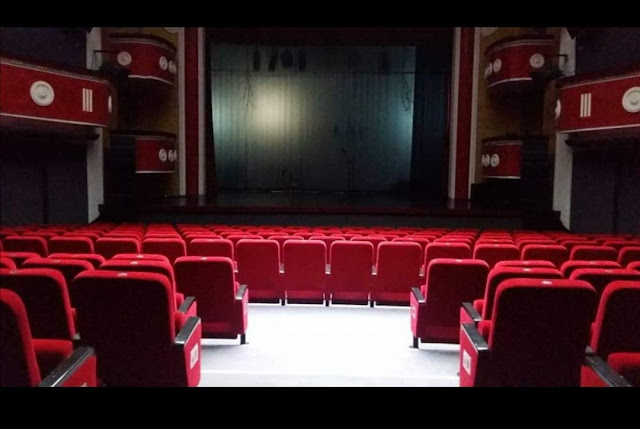

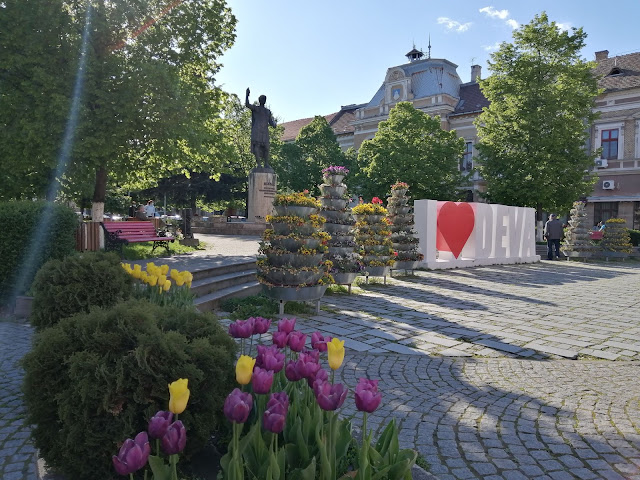













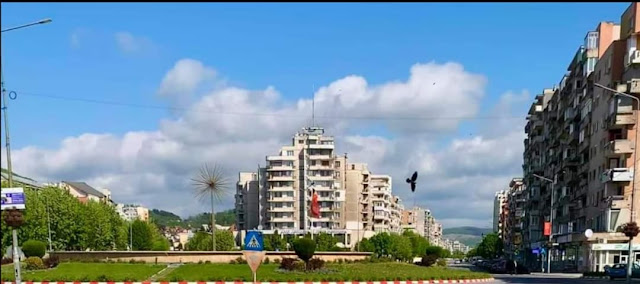










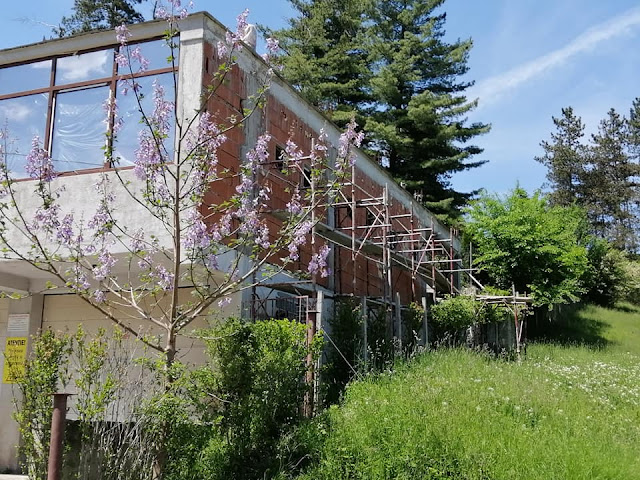














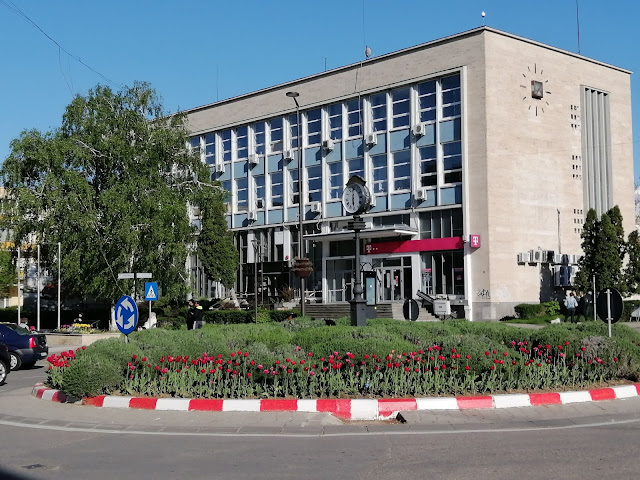


Comments
Post a Comment